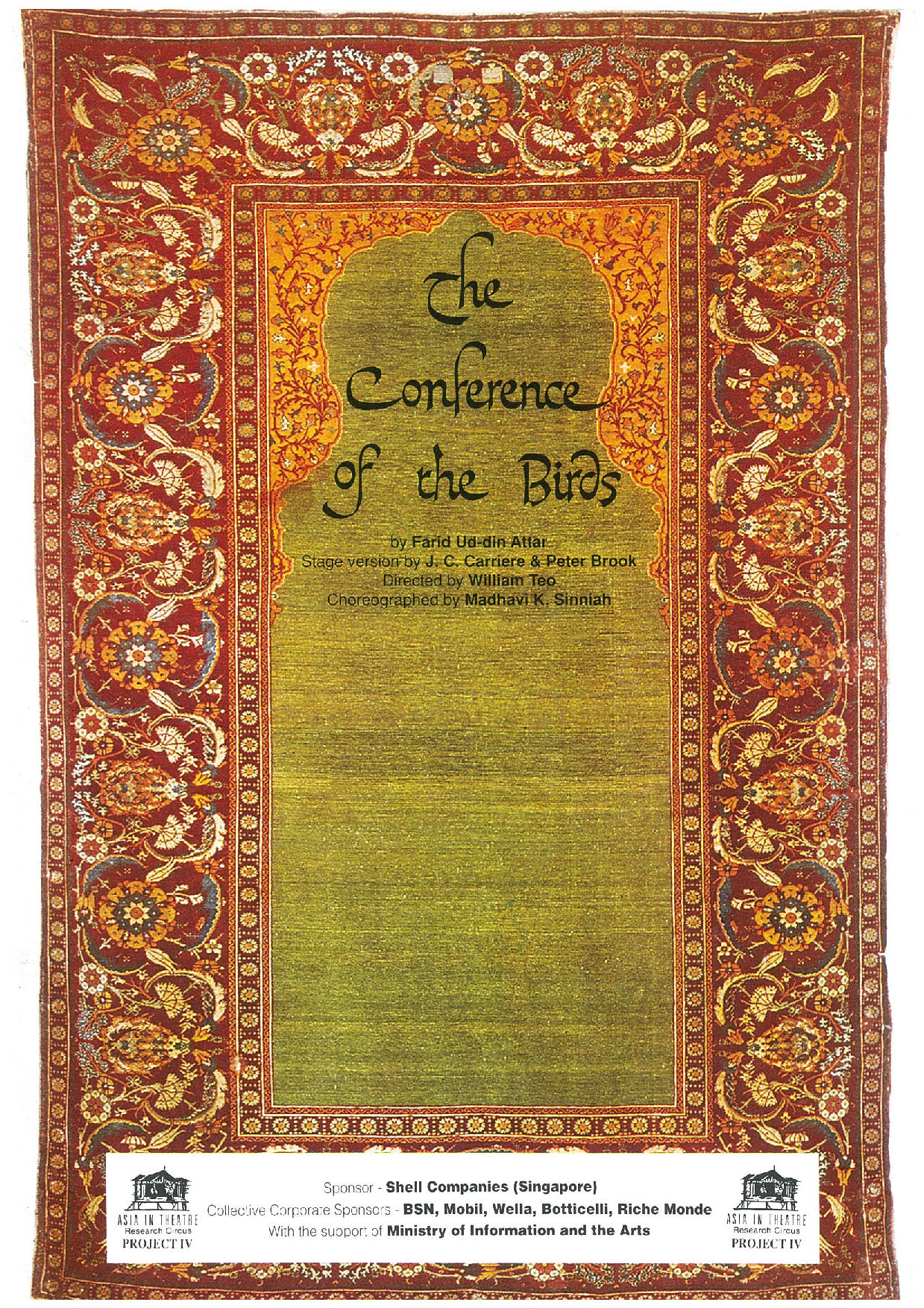The Conference of the Birds is the best-known work of Farid Ud-Din Attar, the Persian poet who was born around 1120 in Neishapour, which was also the birthplace of Omar Khayyam. As the name 'Attar' indicates, he was a perfume seller or druggist and combined this with the practice of medicine.
He travelled widely throughout Egypt, Damascus, Mecca, Turkestan and India in the pursuit of knowledge, and his travels gave him a low opinion of most earthly rulers - emphasised in The Conference of the Birds, whose main theme is the search for an ideal spiritual king. Later in his life, he was tried and found guilty of heresy, and it is perhaps significant that The Conference of the Birds contains many anecdotes about SUFIS who suffered for their beliefs.
Conference of the Birds is a poem about SUFISM, the doctrine propounded by the mystics of Islam. Sufism was an esoteric system - sometimes considered heretical on the grounds that it was seen as incomprehensible and dangerous. Handed down from Sheikh (spiritual leader) to pupil, most Sufi authors would retreat into paradox at critical moments either because they believed their views to be genuinely inexpressable by other means or because they feared orthodox reprisal. Certain tenets are critical to the doctrine - only God truly exists - all things are an emanation of him or his 'shadow' - religion is a way of reaching a Truth beyond the teaching of particular religions - Islam is the most useful faith to achieve this. Attar has no formal teachings on these matters but was instructed in the WAY by the spirit of Mansur-al-Haffaj, the Sufi martyr who appeared to him in a dream. It is important to remember that Sufism was more than a doctrine to which one intellectually assented. It was also a discipline for life and its disciplines followed a carefully prescribed 'WAY'. The purpose of the discipline is to achieve purification - the aspirant has to purify his Nafs, i.e. his personality/ self and substitute these with love (Mahabba) then he must be cast into the flames of passion (Ishq) to emerge in the state of union (Wusla) with transmutation of self (Fana) through gift of dazzlement and wonder (Haira) to everlastingness (Baqa). Attar's poem is a description of the stages encountered by the adept of Sufis' "WAY".
Attar's achievement was to present the Sufi doctrine in an extended allegorical form: interesting and amusing, it also has moments of great insight and narrative suspense. He transformed belief into poetry in the same way as Milton and Dante.
In the allegorical framework of the poem the birds of the world gather to seek a king and are told by the hoopoe that they already have a king - the Simorgh - who lives far away and the journey to him is dangerous. Although they all start to make excuses the hoopoe counters each of their excuses with anecdotes which show how their fears are mistaken. The group flies a little way, formally adopts the hoopoe as its leader and decides to ask a series of questions about the 'WAY' before proceeding. These questions are answered by illustrative anecdotes. The last question is about the length of the journey and in answer the hoopoe describes the Seven Valleys of the WAY - Search, Love, Apprehension, Detachment, Unity, Bewilderment and Fulfilment in Annihilation. When the birds finally arrive at the court of the Simorgh they find that he is none other than themselves. The moment depends on a pun-only thirty (SI) birds (MORHG) are left at the end of the WAY and the SI MORGH meet the Simorgh, the goal of their quest.
Two major themes are critical to the entire poem and these are central to Sufism - the necessity for destroying the Self, and the importance of passionate love. It is always a love that flies in the face of either social or sexual convention - Attar wanted to demonstrate that the Sufis truth existed outside of human convention.
– Alasdair Smith-Laing
